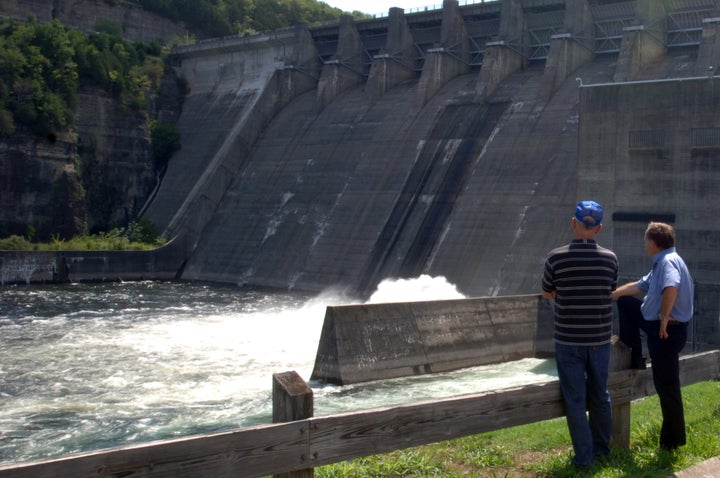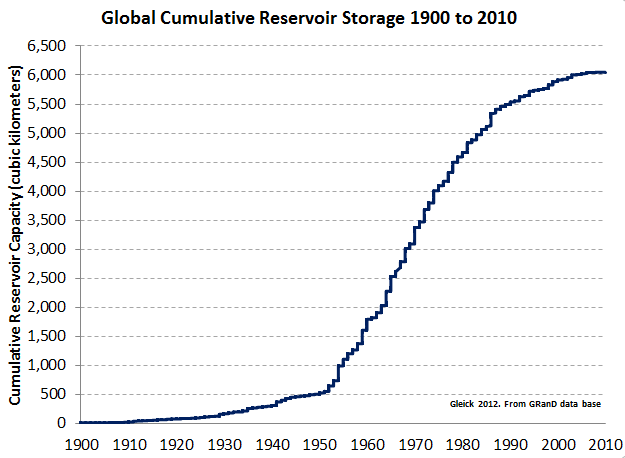
Slowly, but surely, there is a growing realization that the future of energy in America, and around the world, lies not with fossil fuels but with alternative sources of energy. Fossil fuels in the form of combustible carbon (coal, petroleum, and natural gas) largely powered the world's massive and rapid industrial development over the past 200 years by providing convenient and economical energy, mobilized on a vast scale. The problem is not that we are running out of fossil fuels. It turns out the problem is that we have too many of them. Continuing to rely on carbon-based fuels to satisfy current and expected global energy demand will, we now understand, destroy the stability of the very climate of the planet. We cannot afford the environmental damages that are rapidly accruing from continued use of fossil fuels.
As a result, attention has turned to finding ways of satisfying our energy needs with abundant renewable sources of energy that are also believed to offer significant environmental benefits. In recent years, much of the focus has been on capturing some of the vast energy available in wind and energy from the sun. There are other options, as well, including tidal power, renewable biomass, geothermal, and especially the power of falling water, in the form of hydropower.
Hydropower is not new; indeed, it is the oldest and best developed renewable energy source in the world. Tens of thousands of major dams (and many more small dams) have been built around the world for power, water supply, or flood control. Indeed, archeologists have found dams that are thousands of years old. By some estimates 20 to 25 percent of the planet's entire annual river flow can be stored in artificial reservoirs, and incredibly, the redistribution of this much water has already caused a tiny but measurable change in the orbital dynamics of the planet. We get far more electricity from hydropower than from all the other renewable energy sources put together, and hydro facilities provide more electricity than nuclear plants.
But the construction of new dams has slowed in recent decades, especially in the United States and Europe. Figure 1 shows the explosive growth in reservoir storage capacity globally over the past century, followed by a leveling off in recent years.
Why? In the U.S. we've built on almost all the good dam sites (and many bad ones), and the financial and environmental costs of new dams are high.
Most major dams in the U.S. were built with taxpayer money. Throughout the 20th century, Congress authorized hundreds of billions of dollars to be spent from the U.S. Treasury to support efforts of the Bureau of Reclamation, the Army Corps of Engineers, the Bonneville and Tennessee Valley Authorities, and state and local authorities to dam U.S. rivers. Many of these dams helped power the nation through World War II and the economic expansion that followed. Many of them powered the rural electrification programs, and many of them today continue to provide inexpensive electricity to millions of Americans. But as the best dam sites were used, newer projects became more and more economically expensive. By the late 1970s taxpayers were beginning to question the value and effectiveness of these subsidies. Ultimately, both Jimmy Carter and Ronald Reagan worked to cut Congressional pork projects in the water sector, leading to the Water Resources Development Act of 1986, which effectively brought an end to most federal water pork (this history is described in a new book on U.S. water policy). Given today's fiscal realities, significant new federal funds for water projects are unlikely to materialize. Hydro projects must now typically be paid for by the local communities that receive the benefits, which leads to much more careful and rational economic analysis.
Just as the financial costs of dams were rising, there was a revolution in our understanding of their environmental costs: to fisheries, wetlands, water quality, and river health. In the United States, almost all the environmentally acceptable and economically rational dam sites already have dams on them. Sure, we could put big new dams in the Grand Canyon, or on rivers in a few other pristine parks or protected areas, or on remaining undammed stretches of a few good-sized rivers. But the American people decided long ago that the environmental costs of such projects now usually far outweigh any benefits they would provide.
In California, for example, despite regular calls by some for new dams, the only plausible options under consideration are a dam squeezed between two others on an already over-exploited river, a dam in a dry valley that would be filled by pumping water from a nearby river, and raising the height of a 70-year-old dam to permit it to store more water. These are the kinds of options remaining to us, and none would generate much, if any, additional electricity.
There is another factor at work today: The expanding efforts to restore the health of our rivers and streams have led to the realization that some of our oldest and most environmentally damaging dams can be cheaply and easily removed. Many of them are in decrepit condition -- even hazardous to downstream communities -- and the cost to repair or renovate them is high. Or they are silting in and becoming useless for power or water storage. As a result, hundreds of small- and medium-sized dams have actually been removed in recent years, successfully restoring significant stretches of rivers from Maine to California. Very little hydroelectric power has been lost; indeed, a parallel refurbishment effort to put modern, efficient generators in other old dams has permitted us to increase overall hydroelectricity production.
The good news is that smart and careful hydroelectric systems can still be built, here and especially in developing countries where significant untapped potential remains. But those systems must be built carefully -- not the way we built them in the United States, when local communities were not consulted, when environmental risks were unknown or ignored, and when true financial costs were hidden by subsidies. (And, I should note, not the way the Chinese are now pursuing them, aggressively, outside its own borders, in poorer countries.) We know better today. Renewable hydro systems can and will play an important role worldwide in helping us make the transition from fossil fuels to sustainable renewable energy sources. But we must not assume that all hydropower is good, and we must not go back to the days when we sacrifice other American values for the sake of any particular form of energy.

